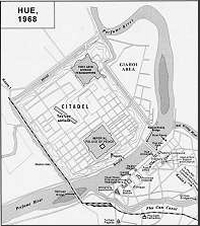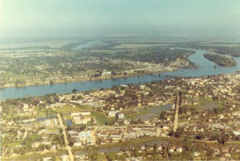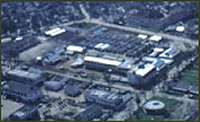| |

|
A pre-1968 view of the citadel at Hué looking northeast across
the Perfume River.
The Imperial Palace is located in the square area just below
the center of
the image. The Hué Citadel airfield is just beyond the
Imperial Palace grounds, slightly left of the image center. |
Hué was the imperial capital of Vietnam until 1945. It still is
revered as a cradle of Vietnamese history and culture.
The city is located along the Perfume River about five miles in from
the South China Sea.
It is at the geographic north-south center of Vietnam.
The focal point of the city is the citadel located on the
north side of the river.
The more modern New City on the south side of the river is home to the
University of Hué.
During the Tet Offensive (January 1968), Hué was the largest city captured
and held by the North Vietnamese Army (NVA).
The city was recaptured by U.S. and Army of the Republic of Vietnam
(ARVN) forces in the bitterly fought 25-day
Battle of Hué.
I arrived in Hué in May 1968, less than three months after the battle.
I was assigned to the
tactical air control party (TACP) supporting the
1st ARVN Division headquartered in
the citadel.
We flew from the Hué Citadel airfield inside the walled city
and lived in a Military Assistance Command, Vietnam (MACV) compound,
a former hotel, just south of the river.
This compound was one of only two areas in the city not captured during the
Tet 1968 attack.
|
|





